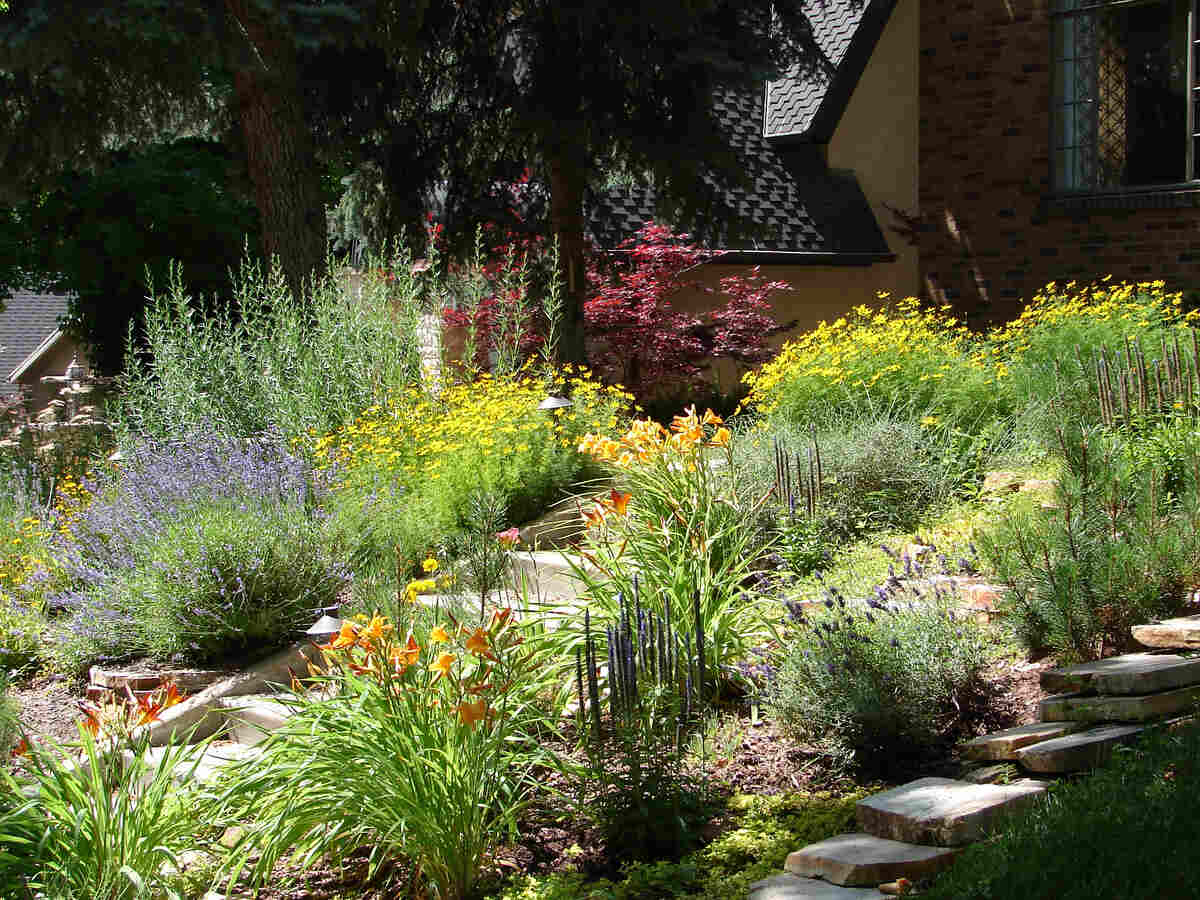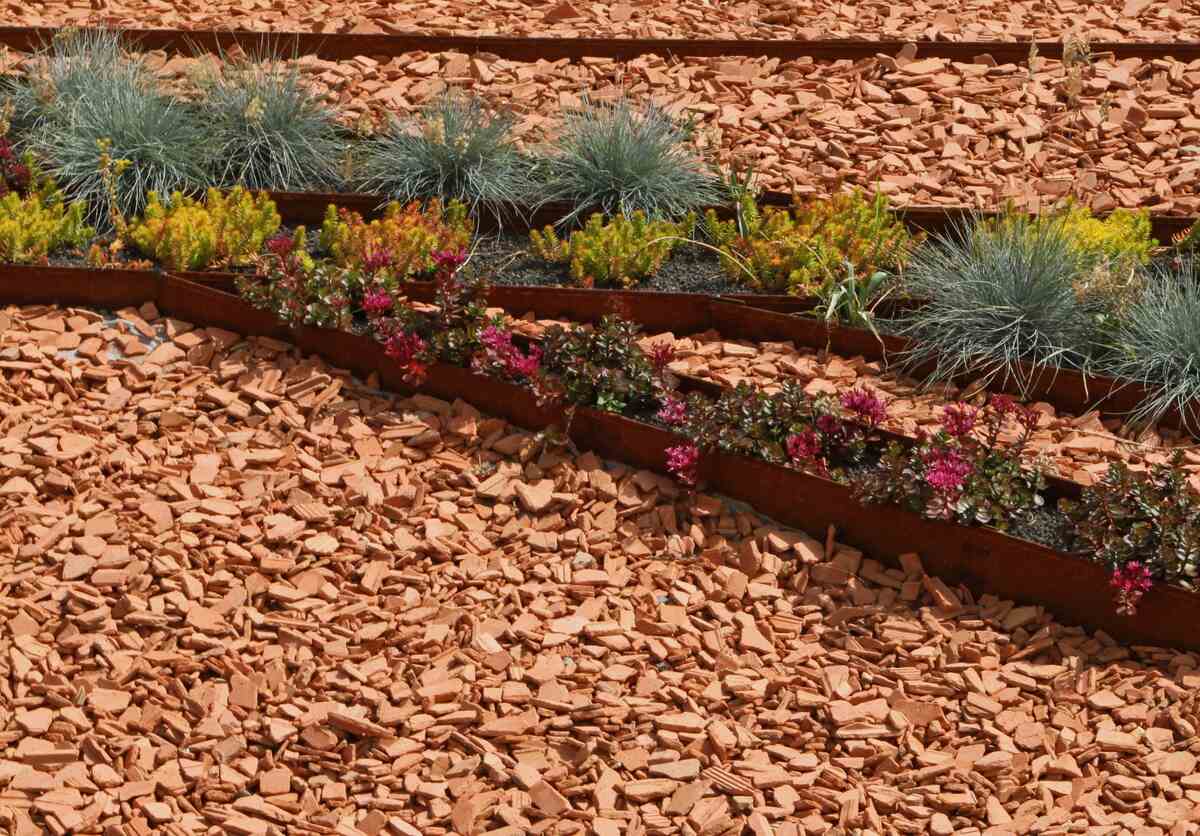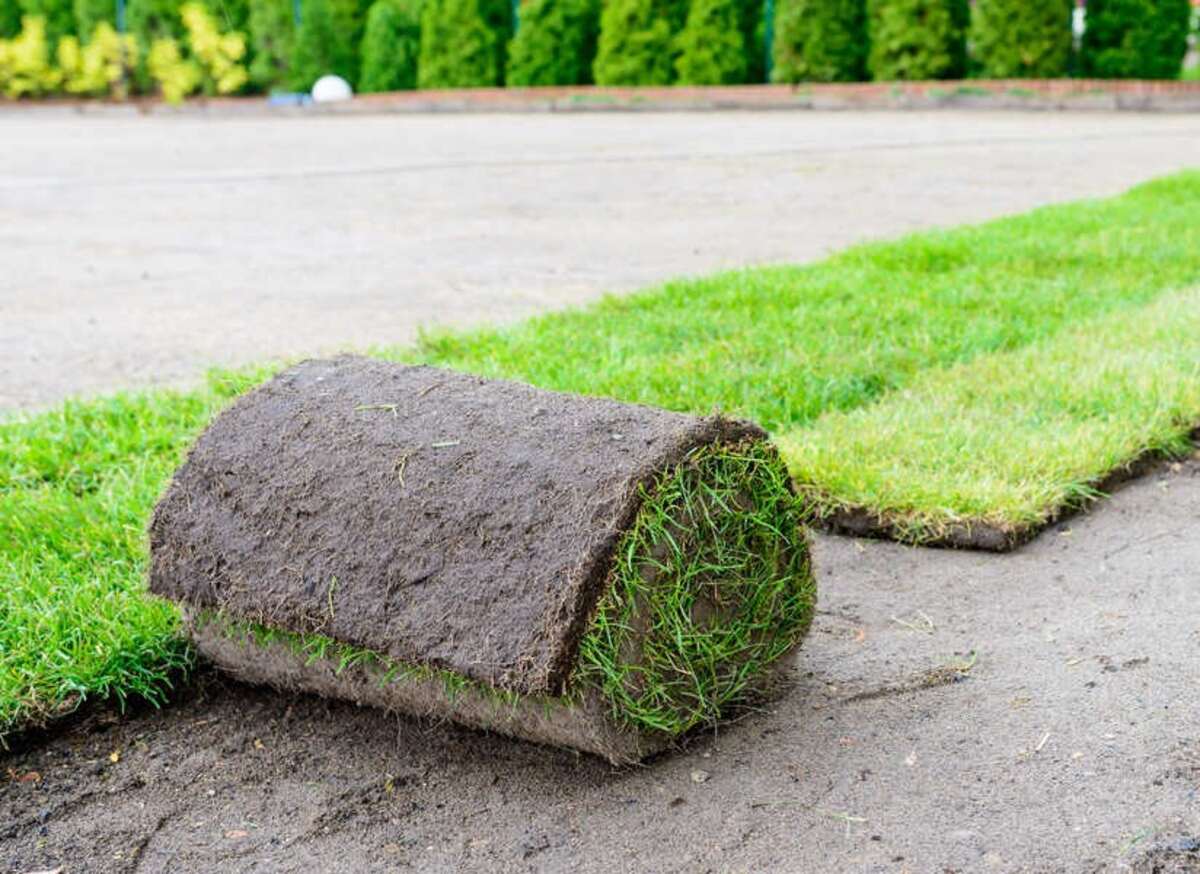
Idaho’s capital city boasts beautiful landscapes and green spaces. Homeowners and landscaping professionals often enhance these areas with lush sod. Sod costs in Boise range between $0.33 to $0.83 per square foot, depending on the grass type.
Sod provides an immediate, attractive lawn while preventing soil erosion, and for Boise homeowners, understanding sod costs is essential when budgeting for landscaping projects. We’ll explore various factors like types of grass, lawn size, and installation methods that can affect your final price.
Cost of Sod in Boise
The cost of sod in Boise varies based on factors such as the type of grass, the amount of sod needed, and the installation method. Generally, the sod itself ranges from $0.33 to $0.83 per square foot depending on the grass type.
Highest/lowest prices for sod in Boise, Idaho:
| Type of Grass | Lowest Price per Square Foot | Highest Price per Square Foot |
| Kentucky Bluegrass/Perennial Ryegrass Blend | $0.33 | $0.68 |
| Tall Fescue | $0.43 | $0.73 |
| Fine Fescue | $0.58 | $0.83 |
Please note that delivery costs, sod installation, and additional services are not included in these sod prices, which cover only the cost of the sod itself.
So, using these ranges, 2,000 square feet of sod would cost from $660 to $1,660 for the sod only.
Factors That Influence Sod Pricing
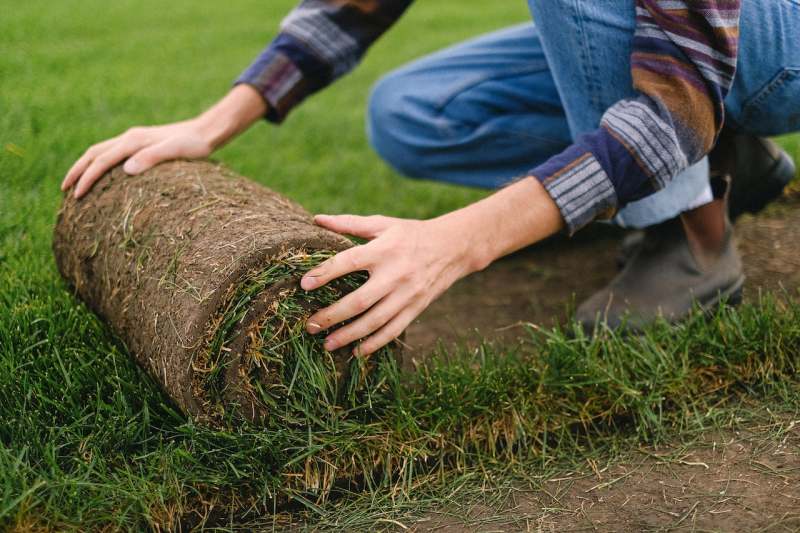
The type of sod you choose plays a significant role in the overall cost. Prices for sod are mostly determined by the grass type and grade. The size of your lawn, installation method, and a few additional factors also influence your total outlay.
Type of Grass and Grade
Boise’s semi-arid climate can make lawn care challenging. However, certain types of grass are better adapted to these conditions. The best grasses for Idaho include Kentucky bluegrass mixed with perennial ryegrass, tall fescue, and fine fescue. Their resilience, adaptability, and gorgeous appearance make them ideal choices for Boise lawns.
- Kentucky bluegrass with perennial ryegrass: In southern Idaho, blending Kentucky bluegrass with perennial ryegrass is recommended to reduce the risk of insect and disease issues. Perennial ryegrass will help protect the Kentucky bluegrass in the heat of summer. This blend is often used as a turfgrass for sports fields due to its vibrant color and high-traffic resilience. It also is usually the cheapest sod choice.
- Tall fescue: Known for its drought resistance and low maintenance, tall fescue is a great option for Boise homeowners wanting a lush lawn with less care. Tall fescue has better shade tolerance and fewer pest problems than Kentucky bluegrass. As a bunch-type grass, it will need overseeding in heavily used areas. The price for tall fescue is usually less than fine fescue but more than Kentucky bluegrass.
- Fine fescues: If you’re looking to reduce your environmental impact, fine fescues are a great choice. This grass type is optimal for creating vibrant, low-maintenance lawns in shaded areas and is commonly mixed with other cool-season grasses in Idaho. It is drought-resistant and has low fertilizer needs, but is the most expensive choice.
Pro tip: High-quality Grade A sod has better roots, which makes it easier to handle and more durable. Additionally, high-grade sod is less likely to have weeds or pests, resulting in a healthier and more attractive lawn. Overall, investing in high-grade sod can save time and money on maintenance in the long run.
Size of Lawn
Your lawn’s size is a significant factor affecting the cost of sod. In Boise, the average lawn size is 7,344 square feet. The cost of installation and the amount of sod needed will vary depending on the size of your yard. You can save money by doing DIY sod installation; however, with a professional landscaper, the experience you’re paying for can improve the success of your new lawn.
To figure out the square footage of your lawn, multiply the length by the width of the area in feet. For example: If your lawn is 50 feet long and 20 feet wide:
(50 x 20) = 1,000 square feet
The following tools can help you accurately measure the area where you want to lay sod:
- Measuring tape: This basic tool is ideal for measuring small, rectangular lawns.
- Wheel measure: If you have a large or irregularly shaped yard, this tool is especially useful.
- Graph paper: For lawns with irregular shapes, draw the area onto graph paper. Break your lawn into measurable shapes, such as rectangles or triangles. Measure these shapes individually, then add them together to calculate the total area like in the example below.
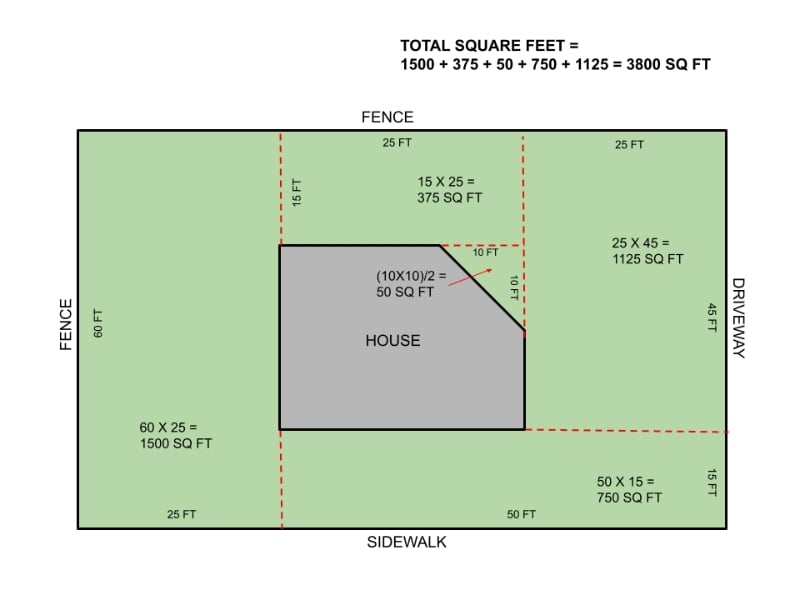
Installation Method
The overall cost of sod installation will depend on if you hire a professional service or go for the do-it-yourself option . Also, with professional installation, you may have the option of a warranty to ensure an established, healthy lawn. DIY installation can save on labor but requires renting or buying equipment like a sod cutter and roller.
- DIY vs hiring a pro: A key question is whether to lay the sod yourself or hire a professional. Doing it yourself can cut labor costs, but it takes time, energy, and know-how. On the other hand, hiring a pro ensures the sod is placed right for the best growth and lifespan, but costs more at the outset.
- Warranty option: Many sod installers offer a warranty for their work. This warranty can cover things like sod dying or installation problems. Even though it might make the initial price higher, it gives you peace of mind that the costs of repairing sod issues are taken care of for you.
Additional Costs to Consider
Beyond the actual sod purchase and installation, there are several additional costs to keep in mind when budgeting for your new lawn in the Treasure Valley area. These costs can include soil preparation, delivery, and watering systems.
Some additional cost considerations include:
- Soil prep: Preparing the soil before laying sod is crucial. This can include a soil test, adding amendments, tilling the ground, and removing old grass.
Pro Tip: Prepare the ground before the sod arrives so you can lay it immediately. Fresh sod stays good for 48 hours after being cut and rolled, so avoid idle time. - Fertilizer and amendments: Depending on your soil’s condition, you may need to apply fertilizer or soil amendments to help your sod establish and grow well. Homeowners typically pay between $103 and $343 for lawn fertilization costs.
- Sod removal: If you’re replacing an existing lawn, you’ll need to consider sod removal costs. Hiring a pro to remove grass costs an average cost of $478, depending on the existing lawn’s size and condition. For DIY projects you can learn how to use a sod cutter to remove unwanted grass.
- Delivery fees: Some vendors may charge a shipping fee, while others offer free delivery with minimum orders. Consider these delivery costs, usually $60 to $259, in your overall expenses. Include them in vendor comparisons and always ask about extra charges before purchasing.
- Watering system: Keeping new sod hydrated is key to its success. If you don’t have one, you might consider the cost of installing a sprinkler system to maintain your new lawn. The cost will depend on your lawn size and type of system, but averages $0.60 per square foot.
Pro tip: Remember, maintaining a lush lawn involves ongoing costs for regular care like fertilizer, soil amendments, water, and mowing. If you prefer a low-maintenance landscape, consider xeriscaping your Boise yard.
Money Saving Tips
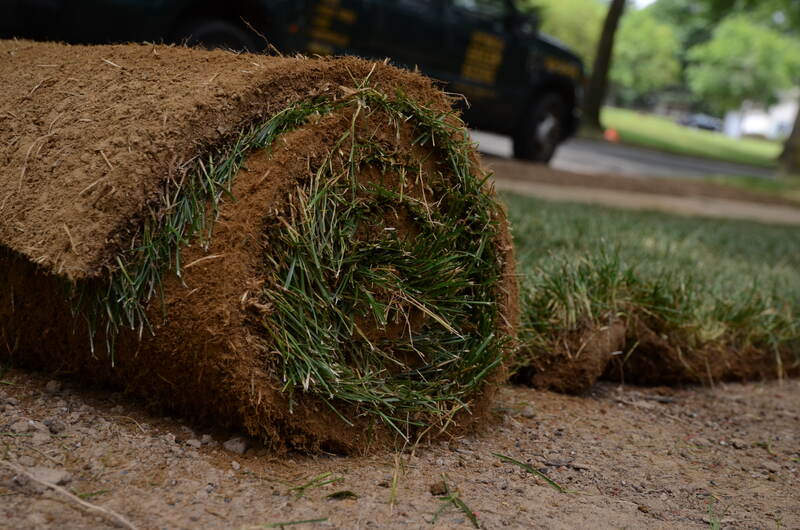
To make your money go further when improving your landscape in Boise, consider ways to save on your sod project. This can include comparing prices from different sellers or installing it yourself. These steps can help you spend less and ensure you get the most for your money.
Comparison Shopping for Sod Suppliers
One of the most effective ways to save money on your sod project is to shop around and compare prices from various suppliers in Boise. Here are a few options to consider:
- Local nurseries vs. big box stores: Local suppliers often offer competitive prices and knowledgeable staff who can provide valuable advice. On the other hand, big box stores may have more variety and offer bulk discounts and free delivery.
- Online retailers: You can buy almost anything online now, and online stores often have a wide range of products at competitive prices. However, you may have to pay shipping costs.
- Seasonal discounts: Some sod suppliers offer discounts when buying sod at a certain time of the year, usually during the off-peak season.
DIY Installation
If you enjoy a good hands-on project and want to save on labor costs, installing sod on your own can be a rewarding experience. It’s important to be prepared and understand the process to ensure the successful growth and longevity of your new lawn. Here are a few tips to help you get started with your DIY sod installation project:
- Soil prep techniques: A healthy new lawn begins with preparing the soil. Remove existing grass or weeds; then till the soil around 6 inches deep and add topsoil. This aids in soil structure and root penetration and provides nutrients. These steps can also help level your yard to prevent water from pooling later.
- Efficient sod laying: Begin along a straight edge and stagger the seams like bricks to prevent erosion and promote uniform growth. Ensure the pieces fit together tightly to avoid gaps and keep the sod moist.
- Sod maintenance tips: Water the sod thoroughly after installation. During the first week, keep the sod and underlying soil moist. From the second week on, reduce watering frequency but increase the volume to promote strong roots. Wait at least two weeks before mowing to allow the sod to secure itself into the soil.
- Mulch: To prevent your new sod from creeping into your beds, you can add borders and apply mulch in your flower beds. Find mulch in Boise at local nurseries, recycling centers, big box stores, and online.
Remember, the ideal growth temperature for cool-season grasses, which make up the majority of turfgrasses in Boise, is between 60 and 75 degrees Fahrenheit. Because these grasses tolerate cold better than extreme heat, late summer to early fall is the best time to plant grass in Idaho.
FAQ: Sod in Boise
Can I Use Starter Fertilizer on New Sod?
Yes, it’s generally a good idea to apply a starter fertilizer to the soil before laying the sod to provide essential nutrients that will help new sod establish itself quickly and grow well.
How Long Does it Take New Sod to Establish Roots?
Typically, sod takes root in 14 days. When it is hard to lift the sod off the ground, you will know the root system has grown. Additionally, keep in mind not to disturb your sod during the first two weeks.
What Are Some Mistakes to Avoid When Laying Sod?
To ensure the health of your new lawn here are a few common missteps homeowners make when laying sod in their yard.
- Watering too much or not enough
- Not tilling the soil before laying sod
- Leaving gaps between sod pieces
- Not securing sod on slopes with stakes
- Leaving sod edges exposed around sidewalks and driveways
- Allowing the sod to sit out too long
- Overlapping pieces instead of placing them edge-to-edge
When to Call a Pro
The cost of sod in Boise can vary greatly depending on the type of grass, lawn size, and installation method. Despite the upfront cost, investing in a beautiful and healthy lawn can significantly enhance your property’s value and curb appeal.
If you’re considering installing sod on your lawn, Pest Gnome is here to provide the best local sod installers in Boise. Don’t hesitate to reach out to us for any of your sod installation needs.
Source:
Main Image Credit: Adobe Stock
